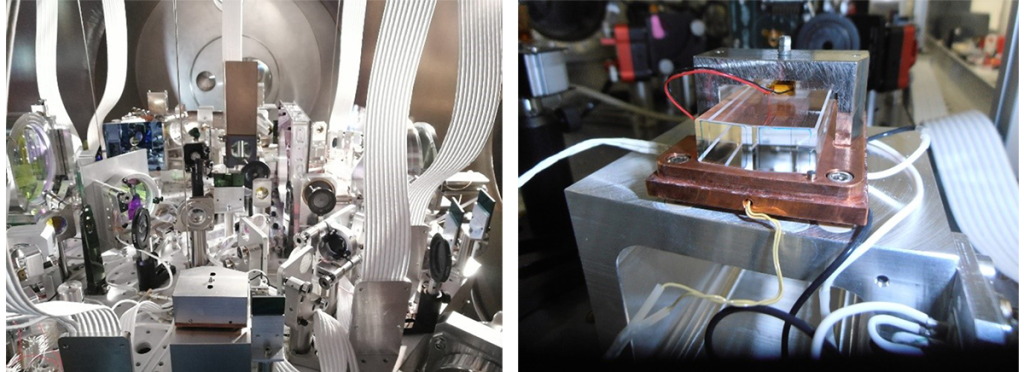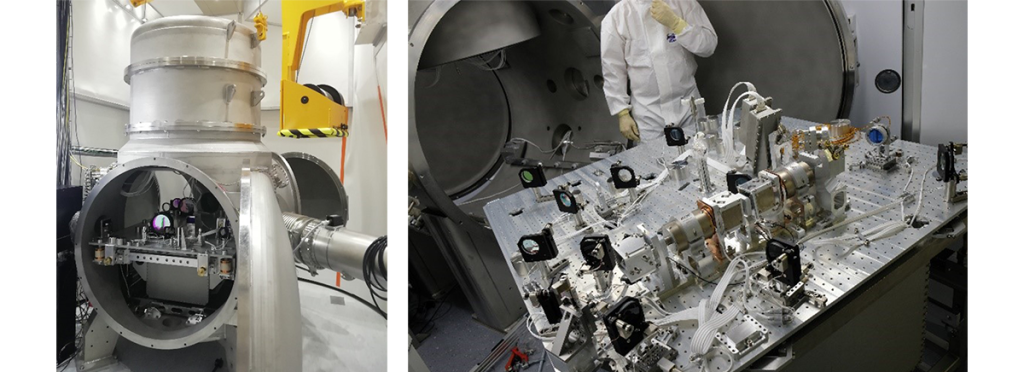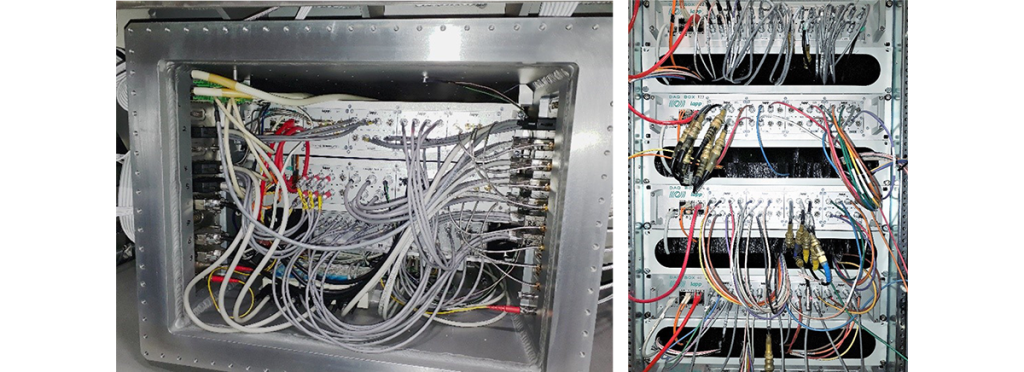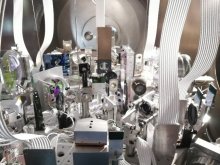AdvancedVirgo+: the future in the present
The installation of the equipment at the site for the first phase of the upgrade of the AdvancedVirgo+ detector has been successfully completed. In spite of the difficult conditions and the two months delay due to the covid19 crisis, the staff on site and in the laboratories of the collaboration have successfully completed this Phase I of the AdvancedVirgo+ detector upgrade. The important, difficult and exciting stage of the “commissioning” of this “new” gravitational wave detector begins now, i.e. the tuning of all the components of the detector, the optimization of their performances and the fight against technical noises in order to reach the sensitivity expected for the future O4 data collection planned to start mid-2022.
The involvement of LAPP
The Virgo team of LAPP is actively involved in this last step. But it also worked a lot on the installation or improvement of several essential elements of AdvancedVirgo+: the optical detection benches, new instrumented benches for the light squeezing system and the real-time control electronics.
Optical benches
The optical detection benches are suspended under vacuum to be seismically isolated and contain a complex set of optical and electronic elements associated with a digital data processing. This set allows not only to improve the detection sensitivity (output mode-cleaner) and to ensure the detection of the light coming from the interferometer (thus the detection of the gravitational wave signal which it contains), but also to provide the signals allowing the control of the interferometer. The LAPP team is in charge of these optical benches, in particular of their adaptation to the improvements developed for Advanced Virgo+ (increase of the laser power, addition of a mirror to recycle the light coming from the interference, installation of a frequency dependent squeezing system). In addition to the installation of new photodiodes and a new output mode-cleaner cavity, modifications have been made to reduce stray beams and scattered light which limit the sensitivity of Virgo at low frequencies. The low-noise electronics of the photodiodes allowing to detect the light coming from the interferometer is still being prototyped and tested, for an installation at the end of the year.

Squeezing
Squeezing is a technique based on the quantum nature of light. This production of compressed states of light, already used in the previous O3 data collection, brings a gain in sensitivity to the detector. The ongoing improvement of this equipment (frequency-dependent squeezing) will allow to gain sensitivity on the whole frequency range where the AdvancedVirgo+ detector is the most sensitive (20 to 10000 Hz). This improved squeezing required the addition of a new 300-meter-long optical cavity that must be able to store light with low losses. The interface between the system producing the squeezing, this new optical cavity and the interferometer itself required in particular the installation of two new optical benches suspended in vacuum chambers, which are used to inject the squeezed beam into the filtering cavity and then into the interferometer. These chambers and optical benches were successfully installed by the LAPP team in the fall of 2020 and spring of 2021 and will be the subject of intense monitoring and commissioning in the coming months. The LAPP team also installed metal structures around each of these enclosures to keep the area clean and to access the suspension present above the bench, as well as vacuum tubes in which the laser beam propagates from one bench to the other.

Real-time control electronics and software
The LAPP team provides the digital electronics, the data exchange and synchronization networks, and the software environment for the front-end data acquisition and the digital control loops of the interferometer. For AdvancedVirgo+, a new production was made (286 boards of 7 different types), after some improvements compared to the production made in 2014 for AdvancedVirgo. These electronic boards were installed, wired and configured on the detector between summer 2020 and April 2021.

Several other improvements are added to these important installations. In particular, the addition of two small optical benches and the optical modification of existing benches to allow the use of a new auxiliary laser beam (green) added in the interferometer. Other improvements currently in progress concern the detector calibration system, the reconstruction of the gravitational wave signal h(t), the detector monitoring tools and future data analysis. The current strong involvement of the team in the tuning phase of the interferometer and the squeezing system will be followed by an intense activity of noise reduction and calibration of the interferometer in order to reach the expected sensitivity for O4 data taking.
The main innovations of AdvancedVirgo+, phase 1:
- implementation of a more powerful laser source (40 W injected in the interferometer instead of 18 to 25 W injected during O3).
- installation of an additional suspended mirror, called signal recycling mirror because it allows to amplify the effect caused by the passage of a gravitational wave on the interferometer.
- improvement of the production of compressed states of light (“squeezing”), already used during the previous O3 data collection, but made frequency dependent in order to gain in sensitivity on the frequency range where the AdvancedVirgo+ detector is the most sensitive (20 to 10000 Hz).
- new structure for the input mirror of the optical cavity “Input Mode Cleaner”: improvement of the suspensions and the surface quality of the mirror and new absorber of scattered light equipped with sensors allowing to follow the evolution of this stray light.
- deployment of a battery of sensors which will allow to deduce the Newtonian noise caused by the small variations of the gravitational field of seismic origin around the interferometer then to subtract it from the detected signal.
The goal of all these improvements is to double the sensitivity of Virgo compared to the O3 run, and to detect for example neutron star mergers up to a distance of 120 Mpc instead of 60 Mpc (1 Mpc = 3.26 million light-years). This doubling of the sensitivity will bring almost ten times more detections and the O4 data should thus provide nearly one detection per day by the network of detectors LIGO Hanford, LIGO Livingston, Virgo and KAGRA!
Learn more:
- Virgo website: https://www.virgo-gw.eu/


